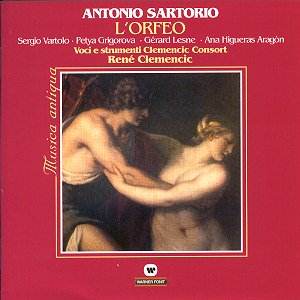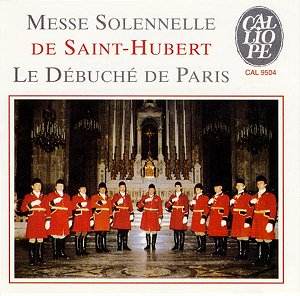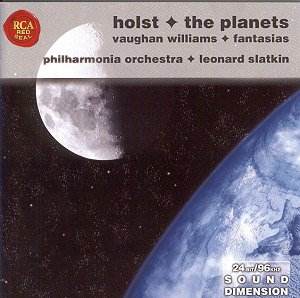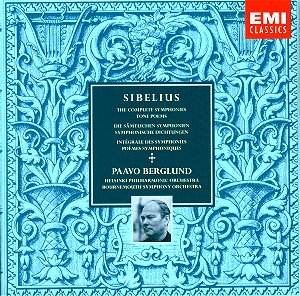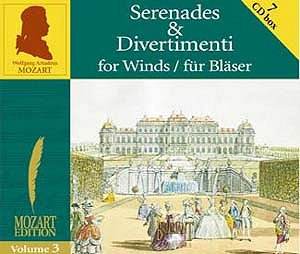 Composer: Wolfgang Amadeus Mozart
Composer: Wolfgang Amadeus Mozart
Works: Serenades & Divertimenti for Wind Instruments (Brilliant Classics, Mozart Edition vol. 3)
Performers: Henk de Graaf, Jan Jansen, Remco de Vries (clarinets), Johan Steinmann, Dymphna van Dooremaal (bassoons), Hans Wisse, Martin van de Merwe (horns), Katty Halvarson, Laura Rijsewijk (oboes), various soloists for the ‘Gran Partita’
Recording: Spring 2001, Hervormde Kerk Rhoon, Arts Music Recording Rotterdam
Label: Brilliant Classics
Mozart’s contributions to the wind repertoire, particularly through his serenades and divertimenti, reflect not only his genius as a composer but also the sociocultural milieu of late 18th-century Europe, where outdoor performances were a staple of public life. This collection, part of the comprehensive Brilliant Classics Mozart Edition, encapsulates the charm and elegance of these works, revealing the nuances of Mozart’s writing for wind instruments that often serve as delightful appetizers to his larger symphonic and operatic feasts.
The performances by The Chamber Orchestra of Europe and their collaborators resonate with both precision and warmth, particularly evident in the ‘Gran Partita’ (KV 361), which stands out for its expansive emotional range and intricate textures. The ensemble’s articulation of the opening Largo and subsequent Allegro molto showcases a blend of clarity and richness, allowing the unique timbres of the ensemble to shine through. The nuanced phrasing in the second movement’s Menuetto, with its playful contrasts, is executed with a lightness that invites listeners into Mozart’s playful yet sophisticated world.
Moving to the divertimenti, composed for two clarinets and bassoon, one can hear the delightful interplay between the instruments that mirrors the conversational style of chamber music. While these pieces may not ascend to the heights of Mozart’s most celebrated works, they exhibit a delightful charm, characterized by playful melodies and harmonic explorations that, while sometimes predictable, are rendered with such evident joy that their modesty becomes part of their appeal. The execution of these divertimenti is marked by a keen sense of ensemble cohesion, particularly in the Rondo movements, where the musicians demonstrate their ability to navigate the intricate and often delicate harmonic shifts.
Recording quality plays a critical role in the listener’s experience of this collection. The clarity achieved in the Hervormde Kerk Rhoon enables the listener to appreciate the individual voices within the ensemble, with the engineering capturing both the warmth of the woodwinds and the subtle nuances of dynamic contrasts. The acoustic space enhances the natural blend between the instruments, which is particularly important in the more intimate works of the divertimenti. This attention to sound quality elevates the listening experience, allowing one to feel as if they are seated among the performers.
Despite the somewhat uniform character of the divertimenti, which may lead some listeners to fatigue if consumed in one sitting, the diverse offerings contained within this set should not be dismissed. The inclusion of selected melodies from Mozart’s operas, such as ‘Voi che sapete’ and ‘La ci darem la mano’, serves to bridge the gap between these lighter works and his more dramatic compositions, showcasing Mozart’s ability to infuse even the most simple of forms with lyrical beauty and poignancy.
The ‘Gran Partita’ remains the jewel of this collection, its emotional depth and structural complexity allowing for a more profound exploration of Mozart’s genius. The performances here are commendable, offering a vibrant interpretation that stands favorably against other notable recordings, such as those conducted by Herbert von Karajan or the wind ensembles of the Berlin Philharmonic, which often emphasize greater dramatic contrast.
This collection is a valuable addition to any Mozart enthusiast’s library. While some works may not possess the melodic peaks of his most acclaimed masterpieces, the performances are consistently engaging, and the recording quality ensures that the listener is enveloped in the delightful soundscape of Mozart’s wind music. For those willing to explore the less trodden paths of Mozart’s oeuvre, this set is both an affordable and enriching experience.
